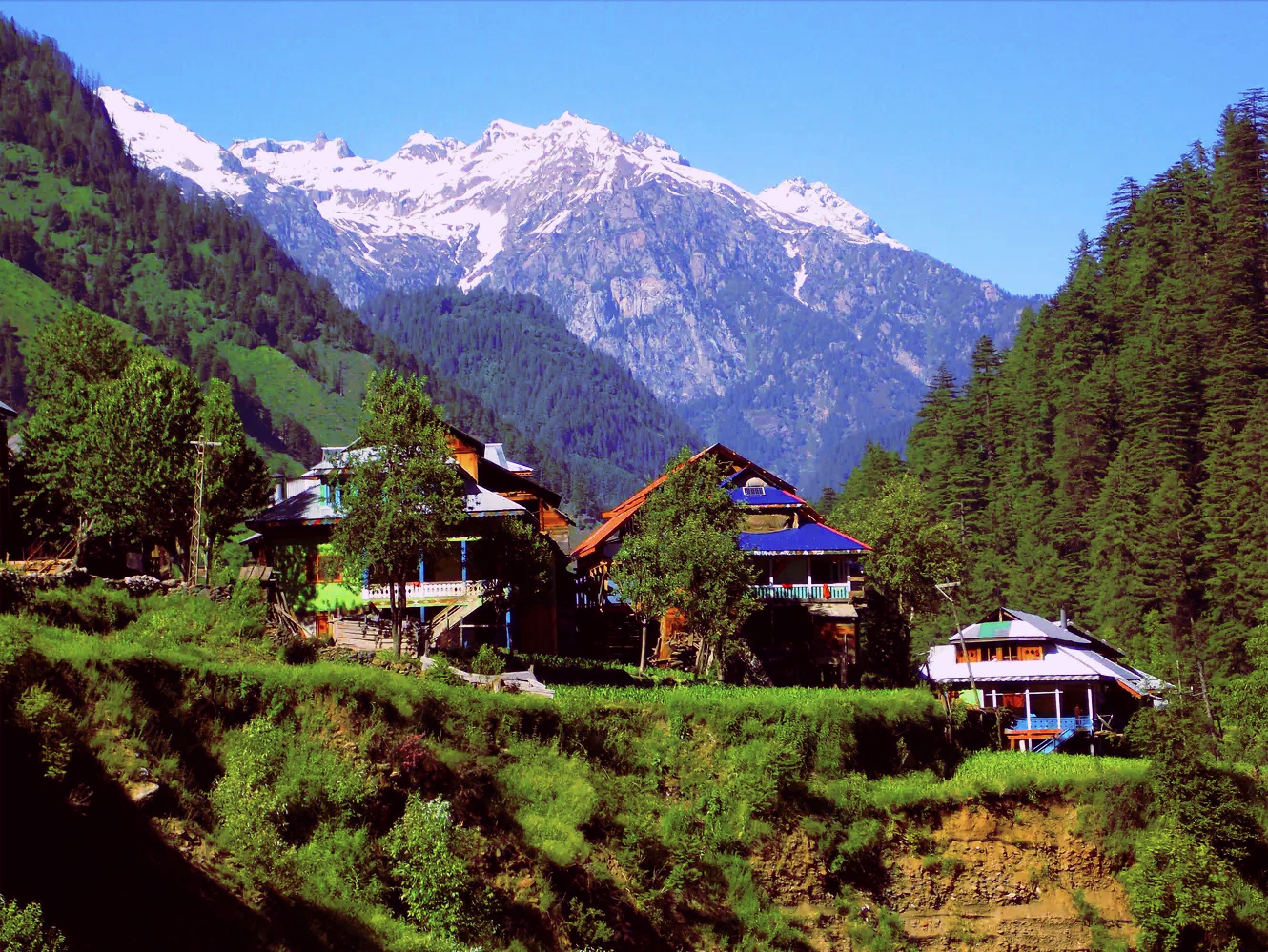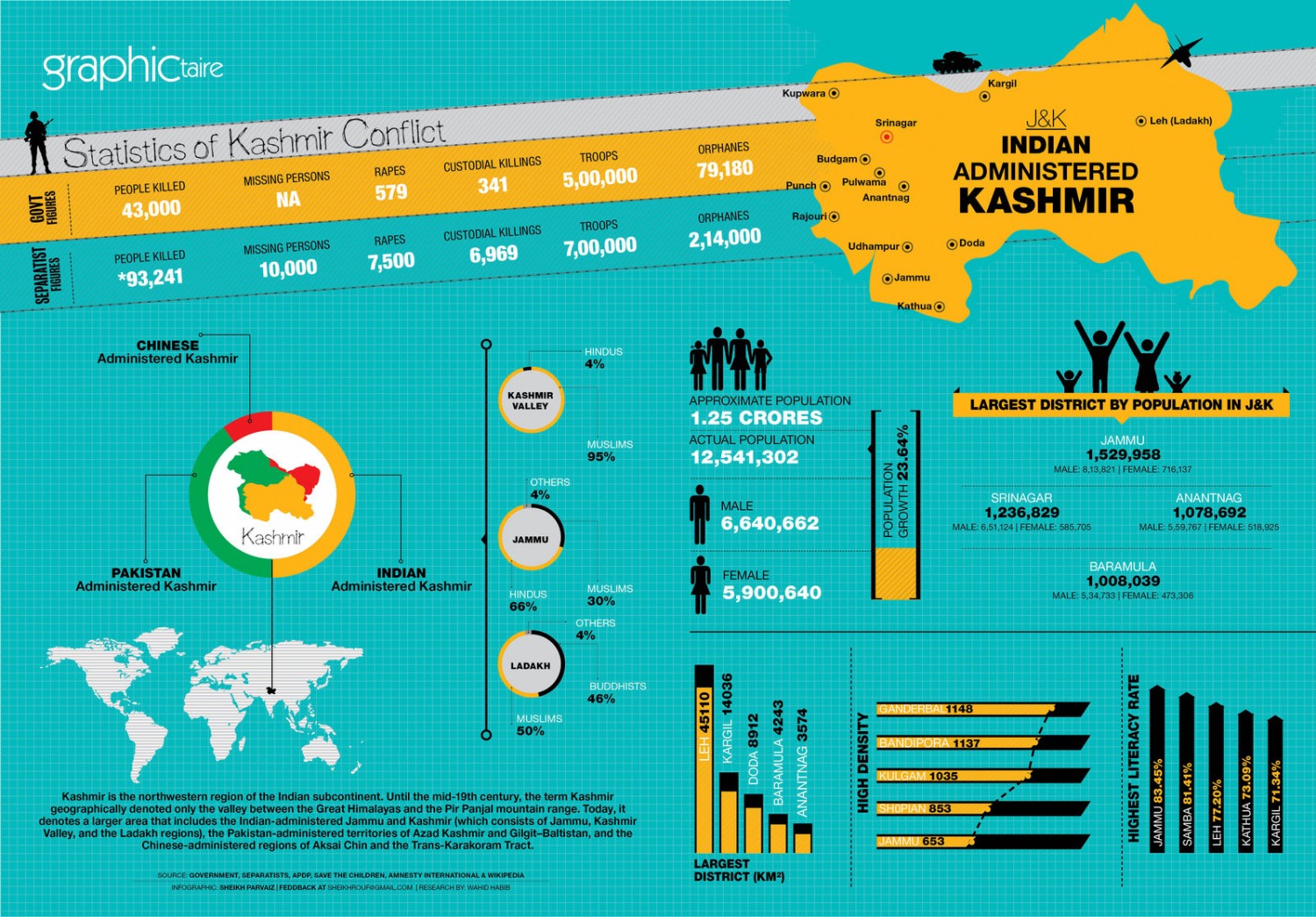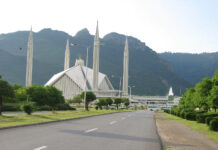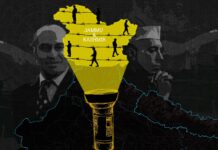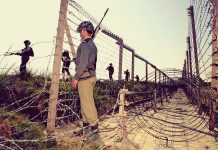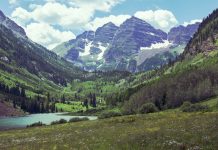Those who argue that Kashmir is the Valley of Kashmir and that Kashmiris are the ethnic Kashmiris of the Valley are engaged in deliberate disinformation. These sinister interests want you to think that they are making ethnolinguistic claims about the people we call Kashmiris, but they are actually making political claims about the territory we call Kashmir.
Historically, Kashmir was larger than the Valley of Kashmir. The Mughal Province of Kashmir included areas of the Ancient Kashmir Region that extended beyond the natural borders of Kashmir Valley, a geological landmass. Rajouri in Indian Jammu, Kotli in Azad Kashmir, the Chibhal region (lands between the rivers Jhelum and Chenab, ertswhile Mirpur District), Uri, Karna, Muzaffarabad and many other areas have historically formed part of the ancient Kashmir region. Outsiders to this region would frequently refer to the diverse peoples of the various Valleys as Kashmiris.
This Kashmir is a fact of history.
When Kashmir passed into the hands of the Mughals during the 1500s, they reconfigured its borders and the borders of their Hindustan Provinces to maximise revenue collection and improve administration. Areas traditionally associated with Kashmir remained nominally independent under tribal feudatories. Centuries later, Kashmir passed into the hands of the Durrani Afghans, Sikhs, the British and the Dogras, who expanded the borders of their own tribal holdings to include areas traditionally associated with the Kashmir of Antiquity. Thus emerged the expansive Province of Jammu, a geo-administrative construct like the Province of Kashmir.
In 1846, the Princely State of Jammu & Kashmir emerged in the shape and form we take for granted today. It is this territorial polity that India and Pakistan call Kashmir, which both countries occupy in part militarily, whilst claiming all of it.
The landed and non-landed groups of Jammu and Kashmir belonged to diverse social units of identification, and would not have been considered ethnic Kashmiris by the standards of ethnology, or conflating regions with ethnic peoples. The territory of Kashmir, for the greater part of its recorded history, had been region and not ethnicity or religion.
Kashmir is thousands of years old, but the modern Kashmiri language like its sister dialects emerged over the past 1 thousand years. It is an Indo-Aryan dialect closely related to neighbouring dialects. The further back we go into history, sibling languages merge into the parent language. The official courtly language of Kashmir’s Rulers had never been Kasheer to appreciate this history. It had been Sanskrit (under Hindu and Buddhist rulers), Persian (under Muslim rulers) and Urdu (under Dogra rulers).
Numerous geographical regions across the world are similarly ethnically and linguistically diverse. The modern Republic of India is one of the most ethnically and religiously diverse countries on earth and this diversity intersperses states, districts and sub-districts. Just because Rulers have used ethnic labels to describe enormously diverse territories, states or provinces, does not mean that all the non-ethnically ascribed communities are imposters, alien or not ‘native’ to the identities being contested. More absurd is the propagandistic claim of the divide and rule brigade that Kashmir’s ethnic communities belong to different ancestral groups or breeding populations, a breathtakingly ignorant and illiterate position debunked by modern science, genetics and modern forms of communication.
Neighbouring peoples are related and belong to the same genetic clusters; the further you move from a particular geography, the more distantly related people become. Pakistanis and Afghans are closely related; Swedes and Japanese are more distantly related. For obvious reasons, Kashmiris cluster genetically with South Asian populations that include Paharis, Pashtuns and Sindhis. Those who argue against these claims are peddling ethno-nationalistic agendas that have no historical basis or tangible evidence to back their reductionist claims.
They are political propagandists and not experts in the non-facts they espouse.
There is a whole body of knowledge that dismantles such nationalistic claims across the world. In the case of the Kashmir Conflict this information is readily accessible through the official pronouncements of India, the international community, political actors, activists and academics from the region. It is therefore patently absurd to reduce decades of conflict over territory to politically-motivated ethnic arguments to cynically reconfigure the conflict through a revised ethnic agenda that splits the pro-independence Kashmiris comprised of huge internal diversity between different groups.
In colonial parlance, we call these tactics ‘divide and rule’.
Every bit of Kashmir State territory is claimed by both India and Pakistan. Legally speaking, the nationals of Kashmir are said to be “state subjects” and they are the only lawful and hereditary residents of the disputed state. Their voices have been silenced.
Languages and cultures have evolved from other languages and cultures. Ancient peoples similarly lived in diverse ethnic regions and had common ancestors, and they did not lay claim to their territories because of origin-myths. To say ‘X’, ‘Y’, and ‘Z’ [‘ethnic group’] has always lived in ‘X’, ‘Y’ and ‘Z’ [region] to the exclusion of all others for thousands of years is to engage in a sordid form of sophistry politically. Such claims have been rejected by cultural anthropologists, linguists, historians, population geographers, and most importantly genuine democrats. This holds even more true for the erroneous claim that the only ‘true’ and ‘authentic’ Kashmiris are those in, or from, the Valley of Kashmir.
In light of the Kashmir Conflict and the competing claims of India and Pakistan, this claim is not ethno-linguistic but entirely political. It constitutes a form of political propaganda and disinformation which can be easily debunked by studying the history of ethnic identities and the history of territorial conflicts.

To restate the obvious
For the purposes of the Kashmir Conflict and the 3 stakeholders in this conflict, the 1) Government of India, 2) the Government of Pakistan and 3) the “Kashmiris” – (state subjects of Kashmir “State”), “Kashmir” is the ‘territory of the erstwhile Jammu & Kashmir State‘, otherwise known as the Dogra Raj or the Jammu Kingdom. These two alternative labels should make this point even more salient as we are speaking about territorial realities using the nomenclature of the colonial British. It was colonial officers who started the practise of calling the territories and subjects of the Dogra ‘Rajput’ Rulers collectively “Kashmir” and “Kashmiris”. This does not in way undermine the historical fact that lots of areas outside the Valley of Kashmir were part of the historical ‘Kashmir’ region we take for granted today, and no one thought to argue otherwise. The colonial convention of calling the vast territories of the Dogra Rulers ‘Kashmir‘ that included Ladakh and Gilgit, incidentally areas that did not form part of the old Mughal Subah of Kashmir is an uncontroversial international convention.
This convention has been accepted by the United Nations and the peoples of Kashmir State, who understand the territorial connotations of the label when the Kashmir Conflict is mentioned. The only people who have a problem with this convention, it seems from their online footfall, are Pakistan’s Intelligence Services and Hindu Nationalists. The overwhelming majority of Hindu Kashmiri Pandits recognise that Kashmir is contested territory and they are state subjects of this territory – a separate space from India and Pakistan because of conflict. They want peace for their collective State for the betterment of divided Kashmir’s indigenous peoples. This population is reconciled with India.
It is, however, interest groups and political lobbies that are actively spreading myths about the true and false Kashmiris, ironically supporting India’s position on Jammu & Kashmir State being an integral and indivisible part of India, a multiethnic State. According to this definition, the people of Pakistan-administered-Kashmir are an occupied people whose lands are unjustly and illegally occupied by Pakistan.
The ‘Kashmir’ label internationally has always meant the divided State of Jammu and Kashmir since the very beginning of the hostilities between India and Pakistan. The Kashmir Conflict is a territorial conflict between two countries excluding the natives of the region. A simple perusal of maps, encyclopaedia posts, newspaper articles throughout this timeline and even before, would expose the farce of those who want to somehow re-write history to further their own skewed political narratives.
Examples of how the word ‘Kashmir’ is used internationally
1) “Definition of Kashmir: A region on the northern border of India and north-eastern Pakistan. Formerly a state of India, it has been disputed between India and Pakistan since partition in 1947, with sporadic outbreaks of fighting. The north-western part is controlled by Pakistan, most of it forming the state of Azad Kashmir, while the remainder is incorporated into the Indian state of Jammu and Kashmir.” OXFORD DICTIONARY.
2) Definition of Kashmiris; “World Directory of Minorities and Indigenous Peoples”; Profile of Kashmiris; ‘Kashmiris’ are the people living in the territory of Jammu and Kashmir, in the extreme north-west of India. Two-thirds of this territory is currently administered as the Indian state of Jammu and Kashmir and has an estimated population of 9 million. The remainder of the region is controlled and administered by Pakistan.
The constitutional position of Kashmir is made complex by the fact that both India and Pakistan challenge the legality of the other’s title to territory, with an effective partition of Kashmir along the cease-fire line as agreed in 1949, with some modification as a consequence of the India-Pakistan war of 1971. That part of the territory which lies within India also includes the region of Ladakh. The land and people of Jammu and Kashmir, a multi-religious, multi-ethnic and multi-cultural region, are known today for the viciousness of the conflict that raged there from the 1980s.
While the case for a political settlement needs to be pursued, there is also a pressing need for India to recognize and deal with the genuine grievances of the Kashmiri people, living in Jammu, Kashmir and Ladakh. This territory has some of the most diverse peoples from India, with a mix of religions, languages and cultures. The Muslim majority population lives in the Kashmir valley, while the plains of Jammu are dominated by Hindus, who make up the largest minority in the state of Jammu and Kashmir while being in a majority in Jammu. The third largest group are Buddhist Ladhakis, who live in the region of Ladakh.”
3) Random Books on Kashmir;
(i) Kashmir: The Case for Freedom, 21 Sep 2011 by Arundhati Roy; (ii) Kashmir; The History and Legacy of the Indian Subcontinent’s Most Disputed Territory, 23 Dec 2017 by Charles River; (iii) Kashmir in Conflict: India, Pakistan and the Unending War, 27 Apr 2010 by Victoria Schofield; (iv) Kashmir: Exposing the Myth behind the Narrative, 7 Jul 2017 by Khalid Bashir Ahmad; (v) Kashmir’s Contested Pasts: Narratives, Sacred Geographies, and the Historical Imagination, 1 Mar 2018; (vi) Languages Of Belonging: Islam, Regional Identity, And The Making Of Kashmir by Chitralekha Zutshi
The books cited above demonstrate how the term Kashmir is deployed in academic circles.
In conclusion, those who argue that (1), ‘the term Kashmir only applies to Kashmir Valley‘ and (2), ‘Kashmiris are only ethnic Kashmiris‘ are engaged in deliberate disinformation and propaganda.
Both India and Pakistan claim the entire State of Jammu & Kashmir in their publications, speeches and official pronouncements; they use the territorial shorthand Kashmir to mean the entirety of the territory. This is a historical norm that goes back to the days of British colonialism.
To separate true ‘Kashmiris’ from false ones is disingenuous not least because the Kashmiris separated between Indian and Pakistani checkpoints are not the Kashur speakers of the Valley, but Pahari speakers of the erstwhile Districts of Mirpur, Poonch and Muzaffarabad. See illustrated Maps below.
The conflict in Kashmir, explained
Why Kashmir remains one of the most militarized regions in the world.Become a Video Lab member! http://bit.ly/video-labThe dispute between India and Pakistan…
Illustrated Maps

*The borders of the Princely State in the north of the country had not been consolidated or agreed between the British Indian Empire and China, which accounts for ambiguous nature of the actual territorial size of ‘Kashmir’ and the Indian Government’s ongoing dispute with China.
 *The Historical Kashmir Region was much larger than the Kashmir Province, it had expanded and contracted throughout its timeline and at one point included the Pothohar Uplands and the Hazara Hills in Khyber Pakhtunkwa. It included, for the greater part of its history, the AJK region, and many areas of Indian Jammu.
*The Historical Kashmir Region was much larger than the Kashmir Province, it had expanded and contracted throughout its timeline and at one point included the Pothohar Uplands and the Hazara Hills in Khyber Pakhtunkwa. It included, for the greater part of its history, the AJK region, and many areas of Indian Jammu.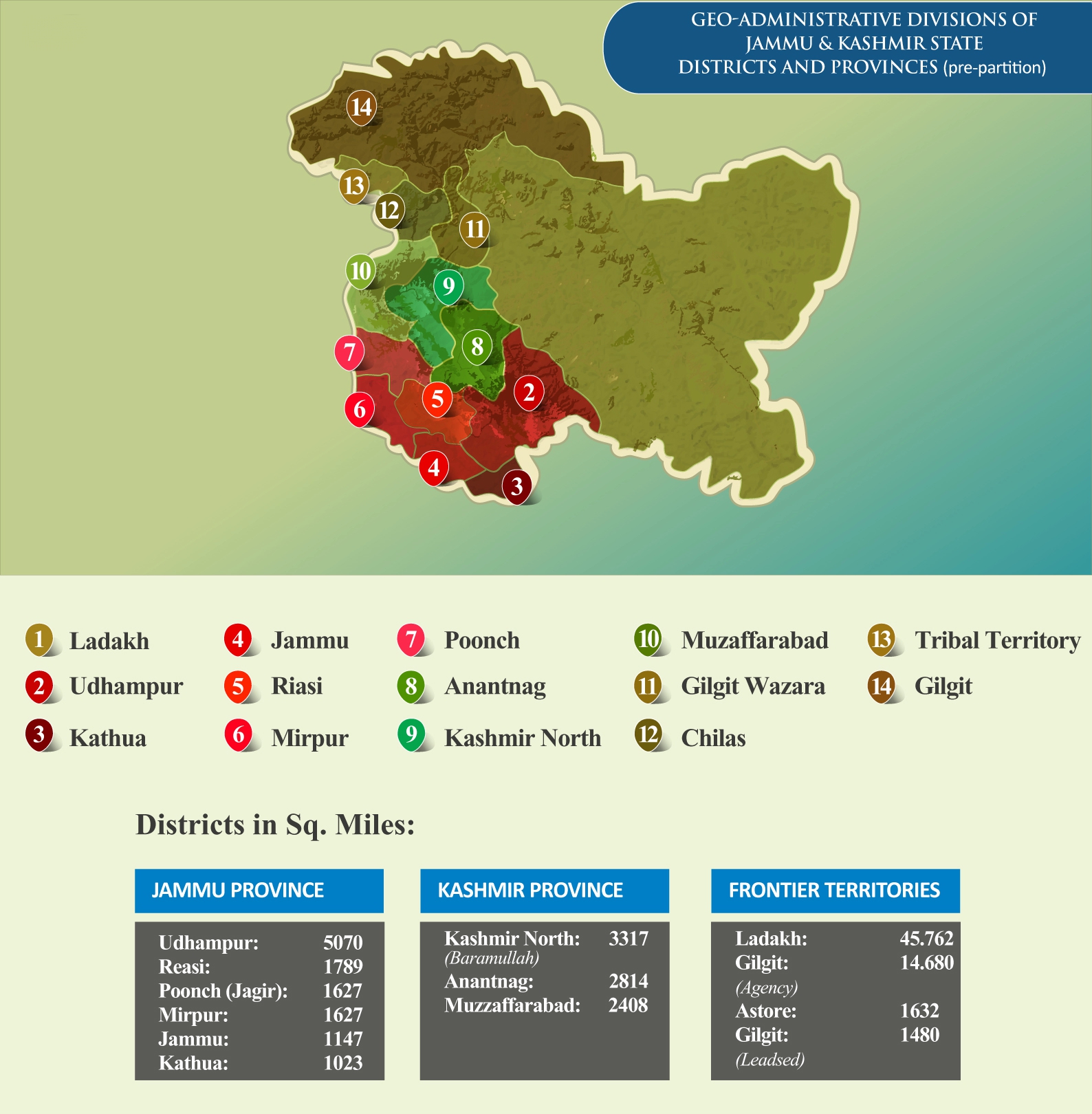

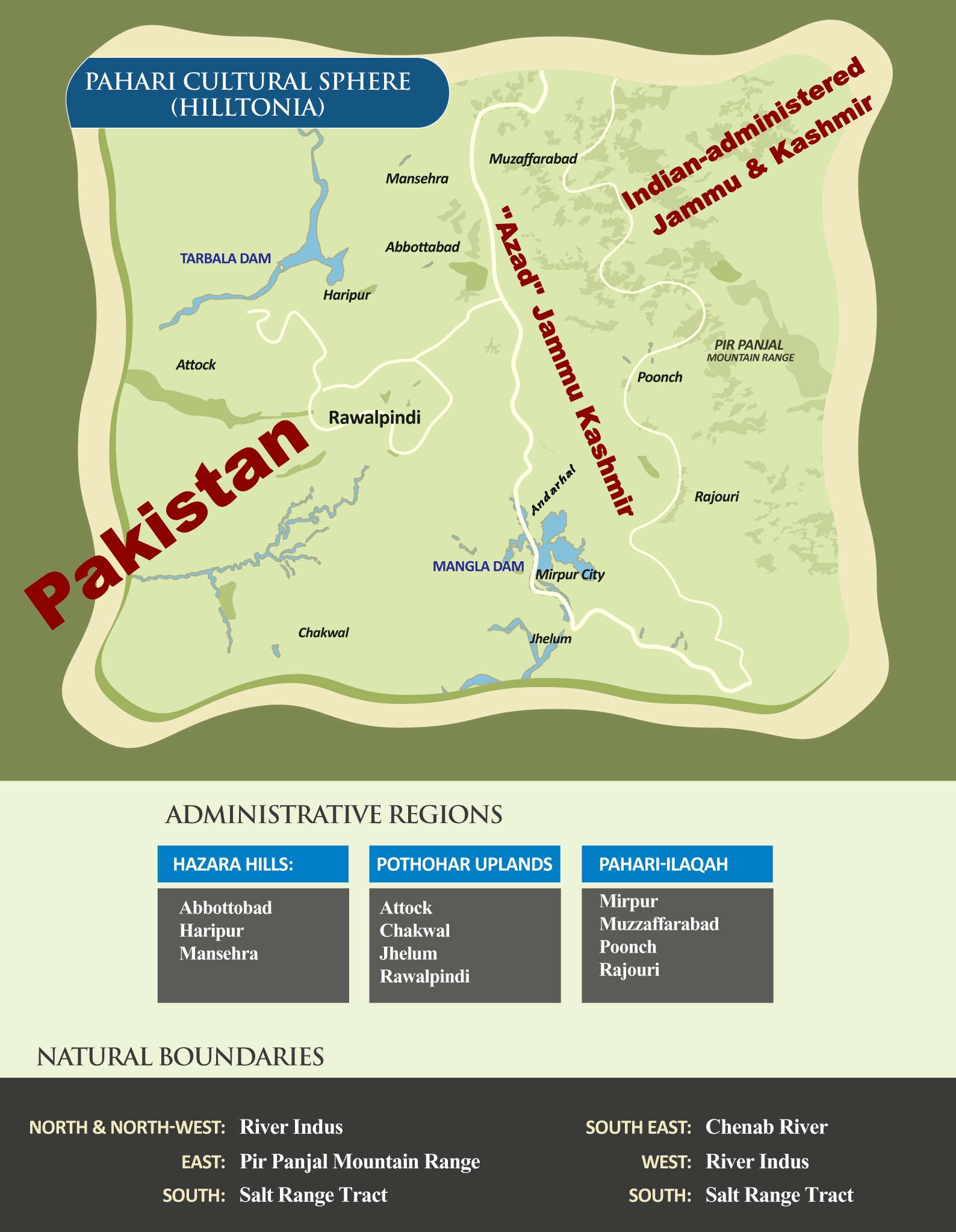 For a more detailed understanding of origin myths and territorial claims concerning Kashmir please click on the following link:
For a more detailed understanding of origin myths and territorial claims concerning Kashmir please click on the following link:
Whose “Kashmir” is it? Conflict & Territorial Claims; the abuse of “myths”
Why do some people say “Israelis” are converted “Jews” separate from biblical “Jews”! Myths of origin and competing territorial claims; contested identities


